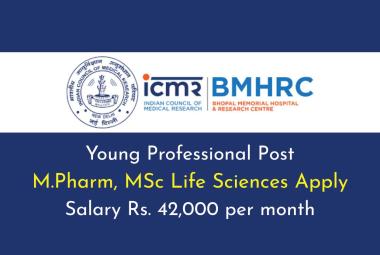{ DOWNLOAD AS PDF }
 ABOUT AUTHORS:
ABOUT AUTHORS:
Meenu Sharma*, Saroj jain
Department of Pharmaceutics, Hindu college of pharmacy
Panchayat Bhawan, Gohana Road, Sonipat (Haryana)
meenu99sharma@gmail.com
ABSTRACT
Amongst various carriers explored for target oriented drug delivery, vesicular, microparticulate and cellular carriers meet several criteria rendering them useful in clinical applications. Lymphocytes, leukocytes, platelets, granulocytes and erythrocytes have been proposed as a cellular carriers. Erythrocytes, also known as red blood cells, and have been the most extensively investigated and found to possess great potential in novel drug delivery. The biocompatibility, non- pathogenicity, non-immunogenicity and biodegradability make them unique and useful carriers. The prime function of these RBCs is to transport gases for respiratory processes. Carrier erythrocytes are prepared by collecting blood sample from the organism of interest and separating erythrocytes from plasma. By using various methods the cells are broken and the drug is entrapped into the erythrocytes, finally they are resealed and the resultant carriers are then called "resealed erythrocytes". Erythrocytes have been proposed as a carriers for a wide range of bioactive components including drugs enzymes, pesticides, DNA molecules and others.
[adsense:336x280:8701650588]
REFERENCE ID: PHARMATUTOR-ART-2149
|
PharmaTutor (ISSN: 2347 - 7881) Volume 2, Issue 5 Received On: 03/03/2014; Accepted On: 09/03/2014; Published On: 01/05/2014 How to cite this article: M Sharma, S Jain; Resealed Erythrocytes - As a Carrier; PharmaTutor; 2014; 2(5); 10-18 |
INTRODUCTION
Current research is aimed at development of drug delivery system (DDS)with maximum therapeutic benefits.
Concepts are based on controlled drug delivery i.e Biotechnology, Polymer sciences and pharmaceuticals sciences. To achieve a required therapeutic concentration of drug which has to be administered in large quantities are used, the major part of which is just wasted in normal tissues. Ideally, a perfect drug should exert it Pharmacological activity only at the target site, using the lowest concentration possible and without negative effects on non-target compartments. Target specificity would also reduce the dosage and frequency of administration. The delivery systems currently available enlist carriers that are either simple, soluble macromolecules (such as monoclonal antibodies, soluble synthetic polymers, polysaccharides and particulate biodegradable polymers) or more complex multi-component structures (microcapsules, Micro particles, cells, cell ghosts, lipoproteins, liposome’s, erythrocytes). Erythrocytes, the most abundant cells in human body, have potential carrier capabilities for delivery of drugs. Erythrocytes are biocompatible, biodegradable, possess very long circulation half lives and can be loaded with a variety of chemically and biologically active compounds using various chemical and physical methods(1) Erythrocyte is the red blood cells, biconcave discs, enucleate filled with hemoglobin (Hb), a protein that functions in gas transport contain plasma protein spectrin, in healthy adult male=4. 5millions/μ ml and in healthy adult female=4. 8million/μ -ml. Immature RBC are called Reticulocytes.(2)
[adsense:468x15:2204050025]
Erythrocytes:
Erythrocytes are natural products of body, biodegradable in nature, Isolation of these are easy and large amount of drug can be loaded in small volume of cells, non-immunogenic in action and can be targeted to disease tissue or organ, prolong the systemic activity of drug while residing for a longer time in the body, protect premature degradation, inactivation and excretion, of proteins and enzymes, act as a carrier for number of drugs, target the drugs within the reticulo-endothelial system (RES) as well as non RES organs/sites. They have the capacity to carry large amounts of drug; and can behave as a slow-release long acting systems. Potential clinical indications for “RES targeting” include iron over storage diseases, parasitic diseases, hepatic tumors, cancer and lysosomal storage diseases carriers (3).

Figure no: 1 Erythrocytes
Erythrocytes can be used as carriers in two ways(4):
1. Targeting particular tissue/organ.
For targeting, only the erythrocyte membrane is used. This is obtained by splitting the cells in hypotonic solution and after introducing the drug into the cells, allowing them to reseal into spheres. Such erythrocytes are called Red cell ghosts.
2. For continuous or prolonged release of drugs-
Alternatively, erythrocytes can be used as a continuous or prolonged release system, which provide prolonged drug action. There are different methods for encapsulation of drugs within erythrocytes. They remain in the circulation for prolonged periods of time (up to 120 days) and release the entrapped drug at a slow and steady rate.
Resealed Erythrocytes
For drug-loading carrier erythrocytes are prepared simply by collecting blood samples from the organism of interest, separating erythrocytes from plasma, entrapping drug in the erythrocytes, and resealing the resultant cellular carriers (5). Hence, these carriers are called resealed erythrocytes. The overall process is based on response of these cells under osmotic conditions (6)
Advantages of resealed erythrocytes as drug carriers:
Resealed erythrocytes have the following advantages:(7,8,9,10,11)
· biodegradability with no generation of toxic products.
· considerably uniform size and shape.
· Prevention of degradation of loaded drug from inactivation by endogenous chemicals.
· wide variety of chemicals can be entrapped.
· The modification of pharmacokinetic and pharmacodynamic parameters of drug.
· Attainment of steady-state plasma concentration which decreases fluctuations in concentration.
· Protection of organism against toxic effects of drugs (e.g. anti-neoplastics).
· have ability to circulate throughout the body facilities for separation technique, handling, transfusion, and working with erythrocytes are available.
· Prevention of any undesired immune response against the loaded drug.
· ability to target the organs of non RES.
ISOLATION OF ERYTHROCYTES:
- Blood is collected into heparin- zed tubes by vein-puncture.
- Blood is withdrawn from cardiac/splenic puncture (in small animal) and through veins (in large animals) in a syringe containing a drop of anti-coagulant.
- The whole blood is centrifuged at 2500 rpm for 5 min. at 4 ±10°C in a refrigerated centrifuge.
- The serum and Buffy coats are carefully removed and packed cells washed three times with phosphate buffer saline (pH=7.4).
- The washed erythrocytes are diluted with PBS and stored at 40°C for as long as 48 h before use.
- Various types of mammalian erythrocytes have been used for drug delivery, including erythrocytes of mice, cattle, pigs, dogs, sheep, goats, monkeys, chicken, rats, and rabbits(12,13)
Methods of drug loading(14):
Several methods can be used to load drugs or other bioactive compounds in erythrocytes including physical (e.g., electrical pulse method) osmosis-based systems, and chemical methods (e.g., chemical perturbation of erythrocyte membrane)
1. Hypotonic hemolysis (15) :
This method is based on the ability of erythrocytes to undergo reversible swelling in a hypotonic solution. Erythrocytes have an exceptional capability for reversible shape changes with or without accompanying volume change and for reversible deformation under stress. An increase in volume leads to an initial change in shape from biconcave to spherical. This change is attributable to the absence of superfluous membrane; hence the surface area of cell is fixed. The cells assume a spherical shape to accommodate additional volume while keeping the surface area constant. The volume gain is ~25–50%. The cells can maintain their integrity up to a tonicity 150 m osm/kg, above which the membrane ruptures, releasing the cellular contents. At this point (just before cell lysis), some transient pores of 200–500 Å are generated on the membrane. After cell lysis, cellular contents are depleted. The remnant is called an erythrocyte ghost.

Figure 2: Hypotonic hemolysis
NOW YOU CAN ALSO PUBLISH YOUR ARTICLE ONLINE.
SUBMIT YOUR ARTICLE/PROJECT AT articles@pharmatutor.org
Subscribe to Pharmatutor Alerts by Email
FIND OUT MORE ARTICLES AT OUR DATABASE
2. Use of red cell loader(16):
Novel method for entrapment of non-diffusible drugs into erythrocytes. With a piece of equipment called a “red cell loader”. With as little as 50 ml of a blood sample, different biologically active compounds were entrapped into erythrocytes within a period of 2h at room temperature. The process is based on two sequential hypotonic dilutions of washed erythrocytes followed by concentration with a hemo filter and an isotonic resealing of cells.
3. Hypotonic dilution(17):
Hypotonic dilution was the first method investigated for encapsulation of chemicals into erythrocytes and is the simplest and fastest. In this method, a volume of packed erythrocytes is diluted with 2–20 volumes of aqueous solution of a drug. The solution tonicity is then restored by adding a hypertonic buffer. The resultant mixture is then centrifuged, the supernatant is discarded, and the pellet is washed with isotonic buffer solution. The major drawbacks of this method include low entrapment efficiency and a considerable loss of hemoglobin and other cell components.
4. Hypotonic pre-swelling (18):
This method was developed and modified by Jenner et al. for drug loading. The technique is based upon initial controlled swelling in a hypotonic buffered solution. This mixture is centrifuged at low values. The supernatant is discarded and cell fraction is brought to lysis point by L portions of an aqueous solution of drug to be encapsulated. The mixture is centrifuged between drug-addition steps. The lysis point is detected by disappearance of a distinct boundary between cell fraction and supernatant upon centrifugation. The tonicity of cell mixture is restored at lysis point by adding a calculated amount of hypertonic buffer.

Fig.3: Hypotonic presswelling
5. Isotonic osmotic lysis(19):
This method, also known as the osmotic pulse method, involves isotonic hemolysis that is achieved by physical or chemical means. The isotonic solutions may or may not be isotonic. If erythrocytes are incubated in solutions of a
substance with high membrane permeability, the solute will diffuse into cells because of concentration gradient. This process is followed by an influx of water to maintain osmotic equilibrium. Chemicals such as urea solution, polyethylene glycol, and ammonium chloride have been used for isotonic hemolysis.
6. Hypotonic dialysis(20):
Several methods are based on the principle that semi-permeable dialysis membrane maximizes the intracellular: extracellular volume ratio for macromolecules during lysis and resealing. In the process, an isotonic, buffered suspension of erythrocytes with a hematocrit value of 70–80 is prepared and placed in a conventional dialysis tube immersed in 10–20 volumes of a hypotonic buffer. The medium is agitated slowly for 2 h. The tonicity of the dialysis tube is restored by directly adding a calculated amount of a hypertonic buffer to the surrounding medium or by replacing the surrounding medium with isotonic buffer. The drug to be loaded can be added by either dissolving drug in isotonic cell suspending buffer inside a dialysis bag at the beginning of the experiment or by adding the drug to a dialysis bag after stirring is complete.

Figure 4: Hypotonic dialysis
8. Electro-insertion or electro- encapsulation (21):
The erythrocyte membrane is opened by a dielectric break down. Subsequently, the pores can be resealed byincubation at 37oC in an isotonic medium. The procedure involves suspending erythrocytes in an isotonic buffer in anelectrical discharge chamber. A capacitor in an external circuit is charged to a definite voltage and then dischargedwithin a definite time interval through cell suspension to produce square wave potential.

Figure 5: Electro-insertion or Electro-encapsulation
Characterization of Resealed Erythrocytes (22-24)
* Drug content quantification:
To determine the drug content, packed loaded cells are deproteinized with aceto-nitrile after centrifugation at 3000 rpm for a fixed time interval. The clear supernatant liquid is analysed spectro-photometrically.
* In-vitro drug release and hemoglobin content study:
In-vitro release of drug(s) and hemoglobin are monitored periodically form drug loaded cells. The cells suspension (5% hematocrit in PBS) is stored at 40°C in amber coloured glass containers. Periodically the clear supernatant are withdrawn using a hypodermic syringes equipped with 0. 45 m filter, deproteinized using methanol and are estimated for drug content. The supernatant of each sample after centrifugation is collected and assayed, % hemoglobin release may be calculated using the formula.

* Percent cell recovery and Morphological study:
Percent cell recovery may be determined by counting the no. of intact cells per cubic mm of packed erythrocytes before and after loading the drug. Phase contrast or electron microscope may be used for normal and drug loaded erythrocytes.
* Osmotic fragility and Osmotic shock study:
To study the effect of different tonicities, drug loaded erythrocytes are incubated separately in normal saline solution at 37 ± 2oC for 10 minutes, followed by centrifugation at 2000 rpm for 10 min. For osmotic shock study, dispersing the resealed erythrocyte suspension in distilled water and centrifuged at 300 rpm for 15 min. The supernatant is estimated for percent hemoglobin release spectro-photometrically.
* Turbulence shock study:
It is the measure of simulating destruction of loaded cells during injection. Normal and drug loaded cells are passéd through a 23 gauge hypodermic needle at a flow rate of 10 ml/min which is comparable to the flow rate of blood. It is followed by collection of an aliquot and centrifugation at 2000 rpm for 10 minutes. The hemoglobin in withdrawn sample is estimated. Drug loaded erythrocytes appear to be less resistant to turbulence, probably indicating destruction of cells upon shaking.
* Erythrocyte sedimentation rate (ESR):
It is an estimate of suspension stability of RBC in plasma and is related to the number and size of red cells and to relative concentration of plasma protein, especially fibrinogen and α, β globulins. This test is performed by determining the rate of sedimentation of blood cells in a standard tube. Normal blood. ESR is 0 to 15 mm/hr. higher rate is indication of active but obscure disease processes.
* Entrapped magnetite study:
The hydrochloric acid is added to a fixed amount of magnetite bearing erythrocytes and contents are heated at 600°C for 2 hr. Then 20% w/v trichloro-acetic acid is added and supernatant obtained after centrifugation is used to determine magnetite concentration using atomic absorption spectroscopy.
* Self life and Stability and Cross linking of Released Erythrocytes:
Glutaraldehyde (0. 2%) treated erythrocytes in a sintered glass funnel (G-4) are collected by filtration and dried in vacuum (200mm Hg) for 10 hr. Alternatively the erythrocyte suspension is filled into vials and lyophilized at- 400°C to 0. 01 torr using a laboratory lyophilizer. The dried powder is filled in amber color glass vials and stored at 40°C for month. Improvement in shelf life of carrier erythrocytes is achieved by storing the cells in powder from, ready for reconstitution at 40°C.
APPLICATIONS OF RESEALED ERYTHROCYTES
I In Vitro Applications
Carrier RBCs have proved to be useful for a variety of in vitro tests. 1.) For in vitro phagocytosis cells have been used to facilitate the uptake of enzymes by phago-lysosomes. An inside to this study shows that enzymes content within carrier RBC could be visualized with the help of cytochemical technique. 2.) when antibody molecules are introduced using erythrocytic carrier system, they immediately diffuse throughout the cytoplasm. Antibody RBC auto injected into living cells have been used to confirm the site of action of fragment of diptheria toxin.(25)
II In Vivo Applications
These include the following
1) Slow drug release
Erythrocytes have been used as circulating depot for the sustained delivery of anti-neoplastics, anti-parasitics, veterinary ,antiamoebics, vitamins, steroids, antibiotics, and cardiovascular drugs. (26)
2) Drug targeting
Ideally, drug delivery should be site specific and target oriented to exhibit maximal therapeutic index wit minimum adverse effects. Resealed erythrocytes can act as drug carriers and targeting tools as well. Surface modified erythrocytes are used to target organs of mononuclear phagocytic system/ RES because the change in membrane is recognized by macrophages.(27)
3) Targeting reticulo-endothelial system (RES) organs
Surface modified erythrocytes are used to target organs of mononuclear phagocytic system/ reticulo-endothelial system because the changes in membrane are recognized by macrophages. The various approaches used include:
• Surface modification with antibodies (coating of loaded erythrocytes by anti-Rh or other types of antibodies)
• Surface modification with glutaraldehyde.
• Surface modification with sulphydryl.
• Surface chemical cross-linking.
• Surface modification with carbohydrates such as sialic acid.(28)
4) Targeting the liver-deficiency/therapy
Many metabolic disorders related to deficient or missing enzymes can be treated by injecting these enzymes. However, the problems of exogenous enzyme therapy include shorter circulation half life of enzymes, allergic reactions, and toxic manifestations .these problems can be successfully overcome by administering the enzymes as resealed erythrocytes. The enzymes used include P-glucosidase, P- glucoronidase, and P-galactosidase.The disease caused by an accumulation of glucocerebrosidaes in the liver and spleen can be treated by glucocerebrosidase-loaded erythrocytes.(29)
5) Treatment of parasitic disease
The ability of resealed erythrocytes to selectively accumulate with in RES organs make them useful tool during the delivery of anti parasitic agents. Parasitic diseases that involve harboring parasites in The RES organs can be successfully controlled by this method. Results were favorable in studies involving animal models for erythrocytes loaded with anti malarial, anti leishmanial and anti amoebic drugs.(30, 31, 32)
6) Removal of toxic agents
Cannon et al. reported inhibition of cyanide intoxication with murine carrier erythrocyte containing bovine rhodanase and sodium thiosulphate. Antagonization of organophosphorus intoxication by released erythrocyte containing a recombinate phosphodiestrase also has been reported.(33)
7) Treatment of hepatic tumors
Antineoplastic drugs such as methotrexate (MTX), bleomycin, asparginase and adiramycin have been successfully delivered by erythrocytes. E.g. in a study, the MTX showed a preferential drug targeting to liver followed by lungs, kidney and spleen.(34)
8) Delivery of antiviral agents
Several reports have been cited in the literature about antiviral agents entrapped in resealed erythrocytes for effective delivery and targeting. Because most antiviral drugs are nucleotides or nucleoside analogs, their entrapment and exit through the membrane needs careful consideration.(35)
9) Enzyme therapy
Many metabolic disorders related to deficient or missing enzymes can be treated by administering these enzymes as resealed erythrocytes. E.g. β-Glucoside, β-glucouronidase, β-galactosidase.(36, 37, 38)
10) Removal of RES iron overloads
Desferrioxamine-loaded erythrocytes have been used to treat excess iron accumulated because of multiple transfusions to thalassemic patients. Targeting this drug to RES is very beneficial because the aged erythrocytes are destroyed in RES organs, which results in an accumulation of iron in these organs.(39)
11) Targeting Non RES
Erythrocytes loaded with drugs have also been used to target organs outside the RES The various approaches for targeting non-RES organs include:
* Entrapment of paramagnetic particles along with the drug.
* Entrapment of photosensitive material.
* Use of ultrasound waves.
Antibody attachment to erythrocytes membrane to get specificity of action.
* Other approaches include fusion with liposome, lectin pre-treatment of resealed cells etc.(40, 41)
NOW YOU CAN ALSO PUBLISH YOUR ARTICLE ONLINE.
SUBMIT YOUR ARTICLE/PROJECT AT articles@pharmatutor.org
Subscribe to Pharmatutor Alerts by Email
FIND OUT MORE ARTICLES AT OUR DATABASE
ROUTE OF ADMINISTRATION
Intra peritoneal injection reported that survival of cells in circulation was equivalent to the cells administered by i.v injection .They reported that 25% of resealed cell remained in circulation for 14 days they also proposed this method of injection as a method for extra vascular targeting of RBCs to peritoneal macrophages. Subcutaneous route for slow release of entrapped agents. They reported that the loaded cell released encapsulated molecules at the injection site.(42- 44)
NOVEL APPROACHES
Erythrosomes:
These are specially engineered vesicular systems that are chemically cross-linked to human erythrocytes’ support upon which a lipid bilayer is coated. This process is achieved by modifying a reverse-phase evaporation technique. These vesicles have been proposed as useful encapsulation systems for macromolecular drugs.(45-46)
Nanoerythrosomes:
These are prepared by extrusion of erythrocyte ghosts to produce nm. Daunorubicin was covalently conjugated to nanoerythrosomes using gluteraldehyde spacer. This complex was more active than free daunorubicin alone.(47-48)
Future prospects:
The concept of employing erythrocytes as drug or bioactive carrier still need further optimization. A large amount of valuable work is needed so as to utilize the potentials of erythrocytes in passive as well as active targeting of drugs in diseases like cancer. For the present, it is concluded that erythrocyte carriers are most effective in novel drug delivery systems considering their tremendous potential. Genetic engineering aspects can be coupled to give a newer dimension to the existing cellular drug carrier concept. Main suggestion for future study is that by using RBCs as carrier through we can transplant steroids and hormones to the targeting site by reducing their side effects.
REFERENCE
1. Green R and. Widder KJ, Methods in Enzymology (Academic Press, San Diego, 1987:pp149.
2. Tortara GJ, Derrickson B, The Cardiovascular System The Blood in Principles of Anatomy and Physiology, 669-672
3. G.J. Torotra and S.R. Grabowski, “The Cardiovascular System: The Blood,” in Principles of Anatomy and Physiology, Publishers, New York, NY, 7th ed., (1993), pp. 566–590.
4. G.M. Ihler,“Erythrocyte Carriers,”Pharmacol. Ther.(1989).20, 151–169
5. Green R and Widder K.J., Methods in Enzymology (Academic Press, San Diego, 1987), p. 149.
6. Ropars C., Chassaigne M., and Nicoulau C., Advances in the BioSciences, Pergamon Press, Oxford, 1987), p. 67.
7. Guyton A.C. and Hall J.E., “Transport of Oxygen and Carbon Dioxide in the Blood and Body Fluids,” Textbook of Medical Physiology (W.B. Saunders, Philadelphia, PA, 1996), pp. 513–523.
8. Jain S. and Jain N.K., “Engineered Erythrocytes as a Drug Delivery ystem,” Indian J. Pharm. Sci. 1997; 59: 275–281.
9. Lewis D.A. and Alpar H.O. Therapeutic Possibilities of DrugsEncapsulatedin Erythrocytes. Int. J. Pharm. 1984; 22: 137–146.
10. Jaitely V. et al., “Resealed Erythrocytes: Drug Carrier Potentials and Biomedical Applications,” Ind. Drugs1996; 33: 589–594.
11. Summers M.P., “Recent Advances in Drug Delivery,” Pharm. J. 1983; 230: 643–645.
12. M.P. Summer. Recent Advances in Drug Delivery, Pharm. J., 1983; 230, 643–645.
13. Torotra G.J. and Grabowski S.R. The Cardiovascular System: The Blood, in Principles of Anatomy and Physiology Harper Collins College Publishers, New York, NY, 7th ed., 1993; 566–590. System’s Activity in Lowering Blood Levels of Urea in Animal Models, biochemistry soc.trans, 1976; 4:677.
14. M. Hamidi and H. Tajerzadeh, “Carrier Erythrocytes: An Overview,” Drug delivery(2003)10, 9–20 .
15. J.R. Deloach, R.L. Harris, and G.M. Ihler, “An Erythrocyte Encapsu- lator Dialyzer Used in Preparing Large Quantities of Erythrocyte Ghosts and Encapsulation of a Pesticide in Erythrocyte Ghosts,”Anal. Biochem. (1980)102, 220 227
16. E. Pitt et al., “Encapsulation of Drugs in Intact Erythrocytes: An Intravenous Delivery System,” Biochem. Pharmacol. 22, (1983) 3359–3368 .
17. J.R. Deloach and G.M. Ihler, “A Dialysis Procedure for Loading of Erythrocytes with Enzymes and Lipids,” Biochim. Biophys. Acta. (1977). 496, 136–145
18. D.A. Lewis and H.O. Alpar, “Therapeutic Possibilities of Drugs Encapsulated in Erythrocytes,” Int. J. Pharm. 22, (1984)137–146
19. H. Davson and J.F. Danielli Dannen Conn.(Hanfer Publishing Co Germany, 1970), p. 80.
20. U. Benatti et al., “Comparative Tissue Distribution and Metabolism of Free Versus Erythrocyte-Encapsulated Adriamycin in the Mouse, Adv. Biosci. (series) 67, (1987)129– 136.
21. K. Kinosita and T.Y. Tsong , “Hemolysis of Human Erythrocytes by a Transient Electric Field,” Proc. Natl. Acad. Sci. USA 74, (1977)1923–1927.
22. Jain S, Jain NK, and Dixit VK, “Erythrocytes Based Delivery of Isoniazid: Preparation and In VitroCharacterization,” Indian Drugs 1995; 32: 471–476.
23. M. Hamidi et al., “In VitroCharacterization of Human Intact Erythrocytes Loaded by Enalaprilat,”Drug Delivery 2001; 8:231–237.
24. Updike SJ and Wakamiya RT, “Infusion of Red Blood Cell- Loaded Asparaginase in Monkey,” J. Lab. Clin. Med. 1983; 101: 679–691.
25. D.A. Lewis. Red Blood Cells for Drug Delivery, Pharm. J., 1984; 32: 384–385.
26. H.O. Alpar and W.J. Irwin. Some Unique Applications of Erythrocytes as Carrier Systems, Adv. Biosci. (Series) 1987; 67: 1–9.
27. Alvarez IJ. Cross- Linking Treatment of Loaded Erythrocytes Increases delivery of Encapsulated Substance to Macrophages, Biotechnology. Appl. Biochem. 1998; 27:139-143.
28. M Gallo, P K Gupta, C T Hung, D G Perrier, J. Pharm. Sci. 1978. 78-190.
29. J.R. Deloach and G.M. Ihler, A Dialysis Procedure for Loading of Erythrocytes with Enzymes and Lipids, Biochim. Biophys. Acta. 1977; 496, 136–145.
30. V. Jaitely et al. Resealed Erythrocytes: Drug Carrier Potentials and Biomedical Applications, Indian Drugs, 1996; 33:589– 594.
31. M.P. Summer. Recent Advances in DrugDelivery, Pharm. J., 1983; 230, 643–645.
32. Talwar N, Jain NK. Erythrocytes as carriers of primaquin preparation, characterization and evaluation. J. Control Release 1992; 20: 133–142.
33. Pei I, Encapsulation of Phosphotriesterase within Murine Erythrocytes, Toxicol, Appl. Pharmacol. 1994; 124: 296-301.
34. Zocchi E. et al. In-Vivo Liver and Lung Targeting of Adriamycin Encapsulated in Glutaraldehyde Treated Murine Erythrocytes, Biotechnology.Appl.Biochem.1988; 10:555–562.
35. Fraternale A, Rossi L., and M.Magnani. Encapsulation, Metabolism, and Release of 2-Fluoro-Ara-AMP from Human Erythrocytes, Biochim.Biophys. Acta.1996; 1291(2):149–154.
36. R. Baker. Entry of Ferritin into Human Red Cells during Hypotonic Haemolysis, Nature, 1967; 215: 424–425.
37. X. Zhou and T. R. Graham. Reconstitution of phospholipid translocase activity with purified Drs2p, a type-IV P-type ATPase from budding yeast Proc. Natl. Acad. Sci.USA 2009; 106: 16586-16591
39. Magnani M. et al. Acetaldehyde Dehydrogenase-Loaded Erythrocytes as Bioreactors for Removal of Blood Acetaldehyde, Alcoholism, Clin. Exp. Res.1989; 13:849–859.
40. H.O. Alpar and W.J. Irwin. Some Unique Applications of Erythrocytes as Carrier Systems, Adv. Biosci. (Series) 1987; 67: 1–9.
41. Gothoskar AV. Resealed erythrocytes: a review, Pharmaceutical Technology 2004; 1: 140-158.
42. Vyas S. P. ; Naresh Talwar ; Karajgi J. S. ;Jain N. K. An erythrocyte based bioadhesive system for nasal delivery of propranolol , Journal of controlled release, 1993; (23): 231-237.
43. R Green, J Miller and W Crosby Enhancement of iron chelation by desferrioxamine entrapped in red blood cell ghosts, The American Society of Hematology 57( 5), 866-872 .
44. B. C. Pressman, Biological Applications of Ionophores, Annual Review of Biochemistry, (45): 501-530.
45. J. Cuppoletti et al. Erythrosomes: Large Proteoliposomes Derived from Cross- Linked Human Erythrocyte Cytoskeletons and Exogenous Lipid, Proc. Natl. Acad. Sci. 1981; 78(5): 2786–2790.
46. S.P. Vyas and V.K. Dixit, Pharmaceutical Biotechnology 1 (CBS Publishers & Distributors, New Delhi). 1999:655.
47. M. Moorjani et al. Nanoerythrosomes, A New Derivative of Erythrocyte Ghost II: Identification of the Mechanism of Action, Anticancer Res. 1996; 16 (5A): 2831– 2836.
48. A. Lejeune et al. Nanoerythrosomes, A New Derivative of Erythrocyte Ghost: III. Is Phagocytosis Involved in the Mechanism of Action, Anticancer Res. 1997: 17- 5.
NOW YOU CAN ALSO PUBLISH YOUR ARTICLE ONLINE.
SUBMIT YOUR ARTICLE/PROJECT AT articles@pharmatutor.org
Subscribe to Pharmatutor Alerts by Email
FIND OUT MORE ARTICLES AT OUR DATABASE










